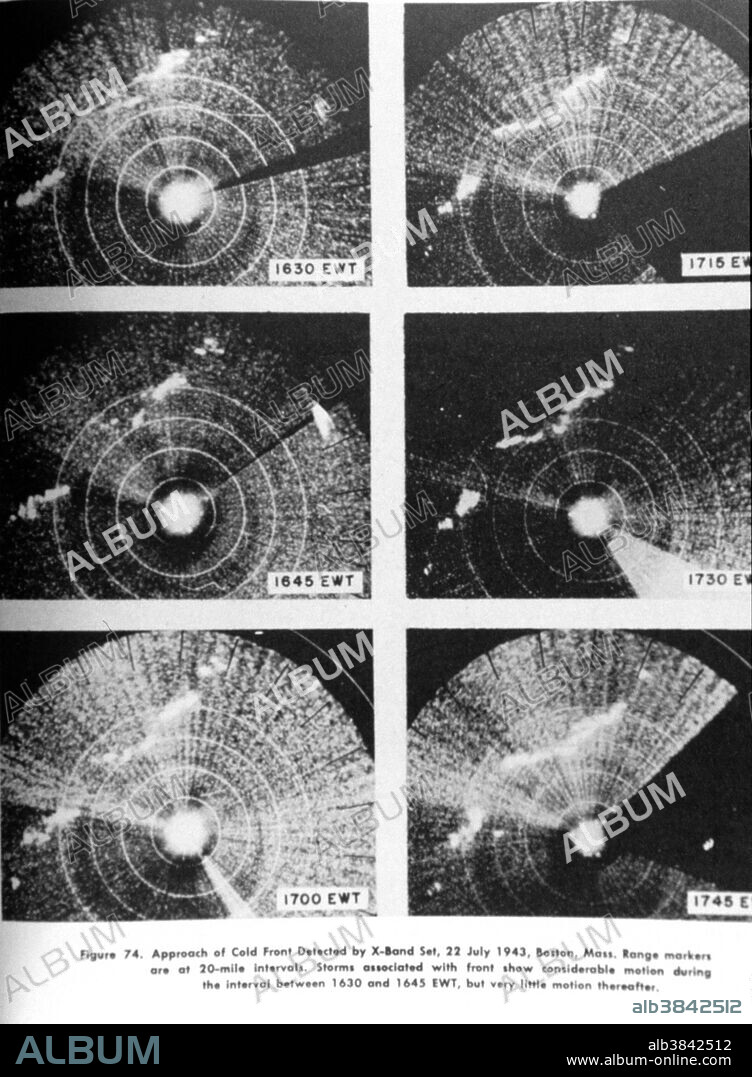alb3842512
Cold Front, X-Band Radar, 1943

|
Add to another lightbox |
|
Add to another lightbox |



Title:
Cold Front, X-Band Radar, 1943
Caption:
Approach of a cold front as observed on an X-Band radar set at Boston in July, 1943. This is perhaps the oldest preserved image of meteorological phenomena as observed by radar. A cold front is the forward edge of an advancing mass of cold air that pushes under a mass of warm air. Cold fronts often cause precipitation; water vapor in the rising warm air condenses and forms clouds, often resulting in heavy rain, thunderstorms, hail, or snow. Winter cold fronts can cause temperatures to drop significantly. Summer cold fronts reduce humidity as drier, cooler air displaces the humid, warmer air. On a weather map, a cold front is depicted as a blue line with triangles that point in the direction in which the cold air is moving.
Credit:
Album / NOAA/Science Source
Releases:
Model: No - Property: No
Rights questions?
Rights questions?
Image size:
3000 x 4084 px | 35.1 MB
Print size:
25.4 x 34.6 cm | 10.0 x 13.6 in (300 dpi)
Keywords:
1943 • 20 XX TWENTIETH CENTURY • 20TH CENTURY • 20TH • AMERICA • AMERICAN • ATMOSPHERIC CONDITIONS • ATMOSPHERIC • BOSTON • BW • COLD AIR • COLD FRONT • COLD SNAP • COLD WAVE • HISTORIC • HISTORICAL • HISTORY • METEOROLOGICAL FORECAST • METEOROLOGICAL • METEOROLOGY • METEOROLOGY • NATIONAL WEATHER SERVICE • NATURAL PHENOMENA • NATURAL PHENOMENON • NWS • OBSERVATION • OBSERVED • OLDEST PRESERVED IMAGE • PHENOMENA • PHENOMENON • RADAR • SCANNING SYSTEM • SCIENCE • SQUALL LINE • STORM DATA • STORM • STRONG WEATHER • TRACKING SYSTEM • TWENTIETH CENTURY • UNITED STATES • US • USA • WARM AIR • WEATHER DATA • WEATHER EVENT • WEATHER FORECAST • WEATHER PREDICTION • WEATHER RADAR • WEATHER TRACKING • WEATHER • X-BAND
 Pinterest
Pinterest Twitter
Twitter Facebook
Facebook Copy link
Copy link Email
Email

